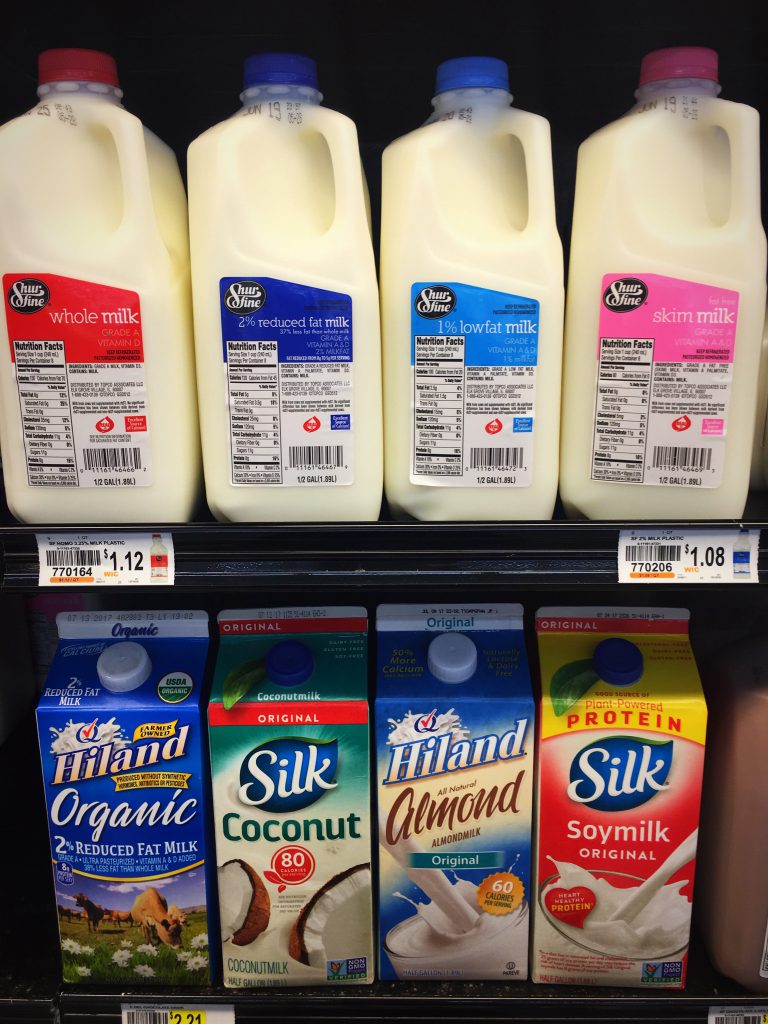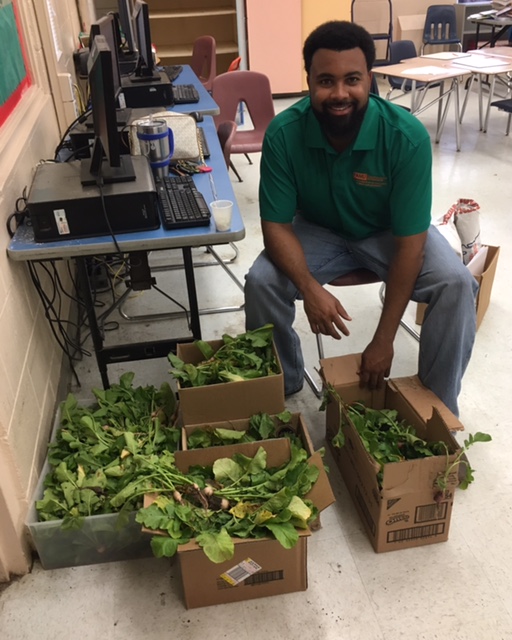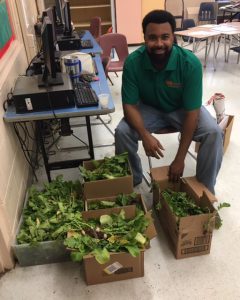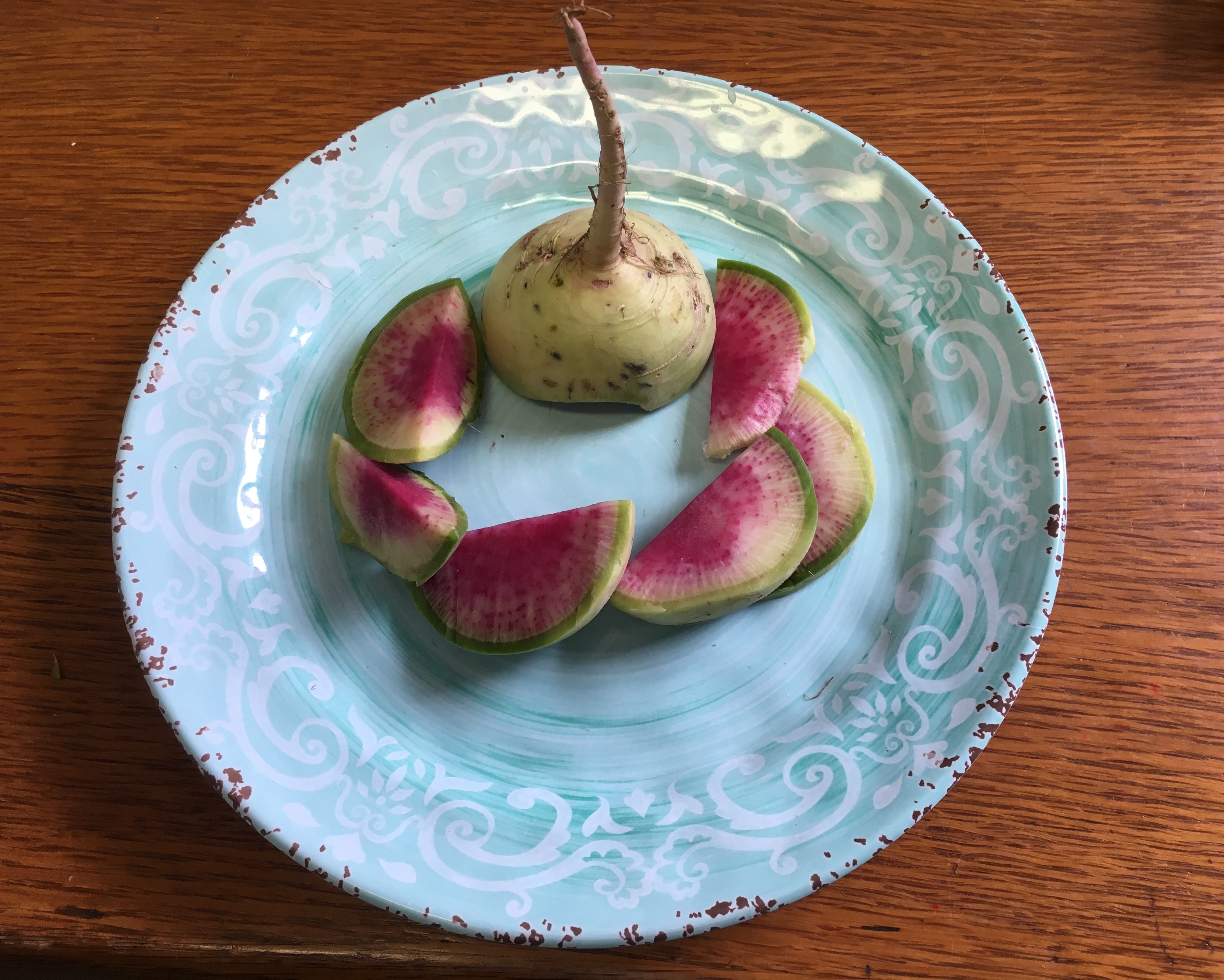by Laurie Osgood | Jun 11, 2017
Staying Healthy At Summer Camp – 7 Keys to a Healthy Camp Counselor Experience
It’s getting hot outside and that means summer camps are heating up! Being a camp counselor is a fun summer job and it’s a great way to learn leadership skills. As a camp counselor, it is your job to take care of the children that are under your supervision, but your own health and well-being is as important as the campers. If you’re not healthy, you won’t be able to properly care for the campers.

Here are 7 keys to staying healthy throughout your summer at camp:
- DRINK PLENTY OF WATER : When working outside in the summertime, it is essential for you and your campers to stay hydrated and avoid developing heat-related illnesses. The Center for Disease Control (CDC) https://www.cdc.gov/nutrition/data-statistics/plain-water-the-healthier-choice.html recommends between 6 to 8 glasses of water daily for good hydration. However, the amount of water that your body needs should be based on your individual need. Some of the symptoms of dehydration are: Mouth Dryness, Fatigue, Headache, Lightheadedness, Dizziness and Thirst. If you or a child in camp shows signs of any or all of these symptoms, immediately seek medical attention
- GET SOME SLEEP: Everyone feels a lot better after a good night’s sleep. One of the most critical threats to wellness for camp staff members is sleep deprivation. It’s easy to burn the candle at both ends when you’re working at a summer camp. Try to stick to your normal bedtime whenever possible. Routine is important for a good night’s sleep!
- EAT HEALTHY: During the hectic pace of summer camp, it is easy to forget to eat properly. What you eat can determine how well your body is fueled and how efficiently it functions. The MyPlate https://www.choosemyplate.gov/MyPlate guidelines call for making half your plate fruits and vegetables as part of a balanced meal. Eating a balanced diet is important for good health and increased energy, especially when working with campers.
- HANDWASHING & FOOD SAFETY: Bacteria and germs are hiding anywhere: in your kitchen, on your plate and even on your hands! It is important to wash your hands and hard surfaces often. Make sure to wash your hands with soap and warm water for 20 seconds before and after handling food. Foodborne bacteria can’t be seen, smelled or tasted, but they can make you sick! Therefore it is important to practice good food safety and food preparation practices. When in Doubt, Throw it out!
- SUN SAFETY: While enjoying the sun and outdoors, protect yourself from overexposure to sunlight by wearing a hat and using sunscreens. Severe sun burns (also known as sun poisoning) can also lead to extreme dehydration for you and your campers. Applying a broad-spectrum sunscreen (UVA/UVB), and re-applying every 2 hours or after swimming will help prevent a sunburn. As a camp counselor, you should remind kids to play in shaded areas to reduce their exposure to UV rays, especially between the hours of 10 AM and 4 PM, when the sun’s UV rays are at their peak.
- BUGS AND TICK BITE PREVENTION: Bugs and summer go together. To avoid getting bug bites, you should apply insect repellant that contains DEET to exposed skin, and wear long sleeves, pants, and other light-colored clothing. Campers should also try to avoid areas where ticks can be found, such as high grass and wooded areas. Campers should check for ticks every day, and remove them right away. Tick bites can lead to Lyme disease, which is particularly dangerous in the summer.
- STRESS MANAGEMENT: Stress can occur when we feel overloaded or under pressure in a demanding situation. Stress is a common problem among camp counselors. Managing your stress level is just as important as maintaining your physical health. Even though stress can be uncomfortable, it’s not always a bad thing, some stress can be a good thing and can help us better handle difficult situations.
As a camp counselor it is vital that you learn to relax, eat right, stay hydrated, and make sleep a priority, wash your hands, protect yourself from the sun, and take care of yourself!
Extension is a great resource for tips to stay healthy during the summer. You can find fact sheets and more information in our Electronic Data Information Source (EDIS) publications: http://edis.ifas.ufl.edu/
by Dorothy C. Lee | Jun 11, 2017
June is National Dairy Month. National Dairy month was first celebrated in 1937 to encourage Americans to drink more milk.
Milk and dairy products comprise a diverse group of foods from fluid milks, fermented milk products, and over 500 cheeses.
Generations of American children have grown up hearing the same parental advice, “Drink your milk…..milk builds strong bones and teeth.”
Milk has long been associated with good health, making it one of the heathiest beverages consumed in the United States. Current Dietary Guidelines recommend daily consumption of dairy for greatest impact. The body requires essential nutrients to maintain optimal health. Milk and dairy products are rich in many of these nutrients. Milk and dairy products contain calcium, vitamins A, D, B12, and high quality protein. The body absorbs calcium with the aid of vitamin D, both of which are found in fluid dairy products. Milk, whole, low fat, and skim, are homogenized and vitamin D fortified.
The amount of consumption from the dairy food group depends on age. Generally one cup of milk, yogurt, or one and a half ounces of cheese is considered a serving from the dairy group.
The cost of milk and dairy products varies. Careful selection can result in substantial savings. Milk generally is less expensive as a source of calcium than other dairy products.
Effective shopping skills depend on understanding and using information on the label including nutrition facts, product date, contents and ingredient statements. Usually larger containers, such as half gallon to a gallon cost less than single quarts. Compare the cost of the number of servings.
Milk and dairy products are highly perishable, so careful handling and storage to prevent spoilage, preserve flavor and retain nutritional uniformity is needed.
Florida regulations call for uniform standards for dating milk and requires all dairy processors to label milk and dairy product containers with the last date the product can be offered for sale. The date on the container does not mean that the milk will be spoiled on that date; it indicates that the milk should not be sold beyond that date. This is to insure a reasonable shelf life in your refrigerator after it is purchased. The quality and flavor are still dependent upon careful handling and storage. Remember, milk and dairy products are highly perishable and should be kept cold.
In recent years many kinds of alterative milk products have appeared in the market place. In choosing a dairy milk or dairy alternative you should be aware of the different alternative milk products available and what makes them different. With so many kinds of milk and milk alternatives on the market, reading the labels on containers to recognize differences in the contents is well worth while. Here is information on some of the more popular forms of milk alternatives now available and an explanation of some special terms you may find on labels and facts that may help in buying.
-

Variety of milks Picture by Wendy Meredith
Almond
- Low-fat
- 40 calories
- 1 gram protein
- Low in protein or calcium content. Nutty flavor.
- Coconut
- 420 calories per cup
- 3 grams protein
- 45 grams fat
- High in fat content.
- Hemp
- Made from hemp seeds
- Contains 10 essential amino acids
- 80-140 calories per cup
- 3 grams protein
- Grassy flavor. Tends to separate when added to hot beverages.
- Rice
- 130 calories per cup
- 1 gram protein
- 2 grams fat
- Low in fat and protein content. Higher in carbohydrates.
- Soy
- 110 -130 calories per cup
- 7-11 grams protein
- 4 grams fat
- Higher in protein content. Thick texture often taste.
There are many ways to add milk into meals. Many people find milk refreshing and never tire of drinking it plain. However, cooked foods and other prepared foods offer many additional ways to add more milk into daily food, always with much added nutritive value and often extra dividends in flavor. Use milk instead of water when preparing cooking cereal, or add milk when preparing soups, mashed potatoes, custards sauces and other cooked foods. Beverages made with milk or milk products fit into meals and snacks and add extra nutritive values to daily fluid intake.
June is National Dairy Month, but milk is needed for good health every day of the year.
References;
https://www.ams.usda.gov/about-ams/programs-offices/dairy-program
https://www.choosemyplate.gov/
https://health.gov/DietaryGuidelines/
For further information, contact:
Dorothy C. Lee, C.F.C.S.
UF/IFAS Extension Escambia County
3740 Stefani Road
Cantonment, FL 32533-7792
(850) 475-5230
by Samantha Kennedy | May 27, 2017
 North Florida’s beautiful spring weather means we get to enjoy a variety of delicious, locally-grown fruits and veggies during the summer months. Produce such as bell peppers, squash, tomatoes, greens, corn, cucumbers, okra, peas, eggplant, and a variety of melons are plentiful and fresh from late spring through early fall.
North Florida’s beautiful spring weather means we get to enjoy a variety of delicious, locally-grown fruits and veggies during the summer months. Produce such as bell peppers, squash, tomatoes, greens, corn, cucumbers, okra, peas, eggplant, and a variety of melons are plentiful and fresh from late spring through early fall.
The benefits of eating fresh fruits and vegetables are numerous and well-known. Fruits and veggies provide important vitamins and minerals that are vital to keeping your body working properly. They’re rich in fiber, which is important for digestive health and helps lower cholesterol. They provide antioxidants, which can help reduce your risk of a variety of cancers. They’re low in calories, fat, and sodium, which make them an ideal snack. And their colorful spectrum makes them a beautiful and healthy addition to any meal.
The MyPlate https://www.choosemyplate.gov/MyPlate guidelines call for making half your plate fruits and vegetables as part of a balanced meal. But remember, preparation is key. Steamed, roasted, raw, baked, and grilled veggies will provide the biggest nutritional bang for your buck, allowing the natural flavors to shine through. Deep fried, breaded veggies add unnecessary fat and calories, so be careful not to rely on this cooking method too often.
Mix and match! Pair a leafy green with a starchy vegetable for a wider spectrum of nutrients. Add fruits such as mandarin oranges or dried cranberries to a salad for a little extra sweetness. Try new flavor combinations by adding herbs and spices – but go easy on the salt!
While fresh fruits and vegetables are healthy, delicious, and plentiful during Florida’s summer months, frozen and canned varieties, including juices, can also provide many of the same health benefits. However, be sure to read the label carefully before buying. Look for low sodium or no salt varieties and only purchase 100% juice beverages, as other drinks may contain a lot of artificial flavorings and colors.
For more information about the benefits and uses of fresh North Florida produce, please visit the Panhandle Produce Pointers page at: http://wfrec.ifas.ufl.edu/panhandle-produce-pointers/produce-pointers-sheets/.
by Marie Arick | May 27, 2017

photo credit Flickr
Though the celebration has been connected to many different religions and dates, Father’s Day has been celebrated since the Middle Ages. The Father’s Day holiday became a national holiday in 1972 thanks to President Nixon and is officially celebrated on the third Sunday of June. No matter the date celebrated, the purpose of honoring our father is unchanged. Many of us have lost our father, but some of us have been fortunate enough to have another male figure present in our lives that continues to represent this to us.
In today’s world, celebrating our ‘Father,’ the parenting he has provided, and the contributions that have helped shape our lives, is truly important. Each father’s or father figure’s impact is different and influences the recipient in their own special way. Can you reminisce right now and think of one important thing this influential person has said to you that has influenced you to this day? I can! My father simply stated this once during a conversation: “things don’t bother me, people bother me.” It struck me as so profound and simply true. I have remembered that statement to this day and repeated it many times to so many others. Were there other words of wisdom he shared with my brothers and me? Yes, and it seems so strange that we all remember different profound things.
Use this day to express your love and gratitude. Reflection and sharing are the best way you can honor someone. If they are no longer with you, celebrate them by sharing a fond memory or profound moment with others.
Sure, keep the tradition of gifting a tie if you like, but add a note of appreciation describing an influential moment or memory you carry. The beauty of sharing an influential life changing moment is priceless.

by Laurie Osgood | May 23, 2017
Radishes are an easy vegetable to grow in North Florida, and in the Spring, there is an abundance of radishes in our gardens. So, what do you do with all those radishes?
 Radishes are a fast growing vegetable that can grow from a seed to a plant in less than 30 days. Radishes are a root vegetable belonging to the Brassicaceae (mustard or cabbage) family. Radishes vary in size, taste, and color. Radishes can be eaten raw, oven roasted, or pickled. The length of time radishes are allowed to grow affects their taste. The longer they are in the ground, the spicier they become.
Radishes are a fast growing vegetable that can grow from a seed to a plant in less than 30 days. Radishes are a root vegetable belonging to the Brassicaceae (mustard or cabbage) family. Radishes vary in size, taste, and color. Radishes can be eaten raw, oven roasted, or pickled. The length of time radishes are allowed to grow affects their taste. The longer they are in the ground, the spicier they become.
Radishes contain only 19 calories per serving, are high in vitamin C, and contain other important nutrients such as folate, potassium, and fiber. According to the Centers for Disease Control, eating vegetables like radishes may help reduce the risk of many diseases, including heart disease, high blood pressure, and some cancers.
Radishes add color, flavor, and texture to coleslaws, salads, and side dishes. When oven roasting root vegetables like radishes, their natural sugars are released, bringing out their sweet, nutty flavors!
Here is a light and flavorful coleslaw recipe for all of those freshly picked radishes. Adding granny smith apples and thinly sliced radishes to traditional coleslaw makes it sweet, peppery, and delicious!
|
Cabbage, Apple, and Radish Coleslaw
Serves: 8 Prep Time: 10 minutes
|
| INGREDIENTS:
5 cups of shredded cabbage, red or green
1 cup granny smith Apples, cut into small pieces
¾ cup radish, cut into small pieces
2 tablespoons white onions, diced
DRESSING:
¼ cup sugar
¼ cup cider vinegar
1.5 tablespoons water
1.5 tablespoons oil
1/8 teaspoon celery seed
1/8 teaspoon dry mustard
A pinch of salt and pepper
INSTRUCTIONS:
Mix cabbage, radishes, apples, and onions in large mixing bowl.
In smaller bowl, combine sugar, vinegar, water, oil, mustard, celery seed, and salt and pepper, and mix well.
Add dressing to cabbage mix and stir well. Place in refrigerator and chill for 30 minutes before serving. |
To learn more about Radishes, visit the FDACS website at: http://www.freshfromflorida.com/content/search?SearchText=radishes
Cabbage, Radish, Apple Coleslaw recipe courtesy of Blackberrybabe.com: blackberrybabe.com/2016/05/23/cabbage-radish-apple-cole-slaw/
To learn more about Chronic Disease Prevention and Health Promotion, visit the CDC Website at https://www.cdc.gov/chronicdisease/

by Laurie Osgood | May 10, 2017
The watermelon radish is a member of the mustard family, which includes arugula, broccoli, and turnips. It has an edible round white root with a green stem and leaves. The inside flesh is rimmed in white with a dark pink circular pattern, resembling a watermelon, and is crisp and sweet, with a mild peppery taste.

SEASONS/AVAILABILITY
Watermelon radishes are as easy to grow as other radish varieties and can be ordered through online seed catalogs. However, they may take longer to mature than other types of radishes (about 65 days). They are available all year long, with peak growing seasons in the spring and late fall. High temperatures and warm soil can have an effect on the radish’s flavor, making the fruit taste bitter.
NUTRITIONAL VALUE
The fruit, root, and leaves of the watermelon radish provide an excellent source of fiber, vitamin C, and other nutrients, particularly when eaten raw.
SELECTING AND SERVING
When shopping for watermelon radishes, select those that are firm, without bruises or cracks. Watermelon radishes can be served fresh or cooked, hot or cold. Cooking the watermelon radish will enhance its natural sweetness. This fruit’s vibrant color is perfect for topping salads and sandwiches. Watermelon radishes are delicious when pickled.
PICKLED WATERMELON RADISHES
- 1 to 2 watermelon radishes
- ½ cup distilled white vinegar
- ½ cup water
- 1 teaspoon sugar
- 1 teaspoon salt
- ½ teaspoon peppercorns, lightly crushed
- 2 cloves garlic, peeled
- Thoroughly wash radishes, slice into ½ inch-thick discs, and place into clean canning jar.
- In a medium saucepan, bring vinegar, water, sugar, salt, peppercorns, and garlic to boil. Simmer one minute. Pour hot liquid over radishes in canning jar.
- Let cool to room temperature, top with canning lid, and store in the refrigerator.
Yield: 1 cup
The watermelon radish is a low maintenance, easy to grow plant. Only a basic level of care is required to ensure that it thrives. Taking care of its basic growing needs (soil, sun, and water) will result in a strong plant that will make a vibrant and healthy addition to your summer recipes.








